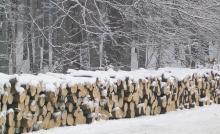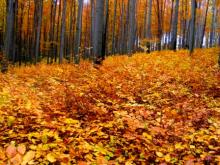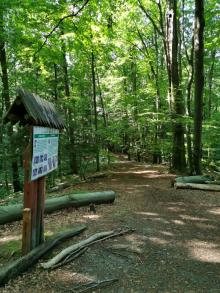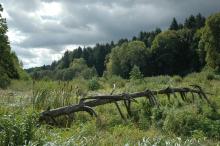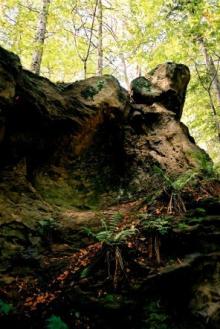 Asset Publisher
Asset Publisher
Polish forests
Poland is in the European lead, while concerning the area of all forests. They cover about 29,2 % of the country territory, and grow within the area of 9,1 million hectares. The overwhelming majority of the forests is state owned, of which almost 7,6 million hectares are managed by the State Forests National Forest Holding..
The number of Polish forest is still growing. The forestation rate of the country has increased from 21 % in 1945 to 29,2 % at the moment. Between 1995 and 2008, the forest area increased by 310 thousand ha. The basis for afforestation works is the "National Programme for Increasing the Forest Cover" (KPZL), assuming an increase of the forestation rate up to 30 % by 2020 and up to 33 % by 2050. Polish forests abound in flora, fauna and fungi. 65 % of the total number of animal species live there.
The forests grow in our country on poor soils, mainly because of the development of the agriculture in previous years. It influences the distribution of the types of the forest sites in Poland. Over 55 % of the forest areas is covered with coniferous forests. In other areas, there are forest sites, mainly the mixed ones. Their small part constitute alder and riparian forests – not more than 3 %.
In the years 1945 – 2011 the area of natural deciduous tree stands within the area of the State Forests National Forest Holding increased from 13 to 28,2 %.
Within the lowlands and uplands the most often occurring tee species is pine. It covers 64,3 % of the forest area of the State Forests National Forest Holding and 57,7 % of private and commune forests. In the mountains the predominant species is European spruce ( in the west) and European spruce with beech (in the east). Domination of pine is the result of carrying on sustainable forest management in the past. Once, the monocultures (crops or cultivations of one species) were the answer to the great demand of industry for wood. Such forests appeared to be quite fragile to climatic factors. They also were often the prey of pests' expansion.
In Polish forests, the share of other tree species, especially deciduous trees have been systematically increasing. The foresters have stepped aside from monocultures – that is why, they try to fit specific species of the forest stand to the natural stand, that would be proper for the given area. Thanks to that, in the years 1945 – 2011, the area of the deciduous tree stands within the lands of the State Forests National Forest Holding increased from 13 to 28,2 %. There occur more and more frequently the following tree species: oaks, ashes, maples, sycamore maples, elms, but also birches, beeches, alders, poplars, hornbeams, aspens, tilias and willows.
Our forests are the most often represented by the forest stands aged 40 to 80 years. The average age of the forest equals 60 years. More and more trees are of big size at the age over 80 years. Since the end of the Second World War, the forests' area has increased up to almost 1,85 million hectares.
Raport o stanie lasów w Polsce 2012
 Asset Publisher
Asset Publisher
„Wiosenne leśne porządki”
„Wiosenne leśne porządki”
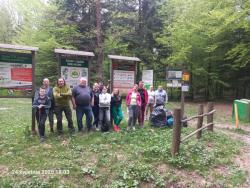 Członkowie SST "Lubcza" na polu tursytycznym po zakończonej akcji sprzątania lasów
Członkowie SST "Lubcza" na polu tursytycznym po zakończonej akcji sprzątania lasów
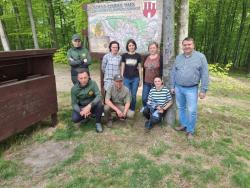 Wspólne zdjęcie uczestników sprzątania - przedstawicieli Gminy Czudec oraz Stowarzyszenia MTB Czudec z Leśniczym Sławkiem Rachwałem w lesie Zamkowym
Wspólne zdjęcie uczestników sprzątania - przedstawicieli Gminy Czudec oraz Stowarzyszenia MTB Czudec z Leśniczym Sławkiem Rachwałem w lesie Zamkowym
 Wspólne zdjęcie uczestników spotkania - druhny i druhowie Ochotnicznych Straży Pożarnych Frysztak, Gogołów i Glinik Dolny z podleśniczym Witoldem Krzepkiem w lesie w Gliniku Dolnym
Wspólne zdjęcie uczestników spotkania - druhny i druhowie Ochotnicznych Straży Pożarnych Frysztak, Gogołów i Glinik Dolny z podleśniczym Witoldem Krzepkiem w lesie w Gliniku Dolnym
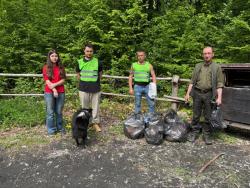 Uczestnicy akcji sprzątania na wspólnym zdjęciu - przedstawiciele Młodzieżowej Rady Gminy Tyczyn z leśniczym Andrzejem Kudłą na Przylasku
Uczestnicy akcji sprzątania na wspólnym zdjęciu - przedstawiciele Młodzieżowej Rady Gminy Tyczyn z leśniczym Andrzejem Kudłą na Przylasku
 Wspólne ognisko uczestników akcji sprzątania w Leśnictwie Godowa - przedstawicieli Starostwa Powiatowego w Strzyżowie oraz Gminy Strzyżów
Wspólne ognisko uczestników akcji sprzątania w Leśnictwie Godowa - przedstawicieli Starostwa Powiatowego w Strzyżowie oraz Gminy Strzyżów
Akcja sprzątania świata w Nadleśnictwie Strzyżów.
24 kwietnia br. w Nadleśnictwie Strzyżów odbyła się zorganizowana przez Służbę Leśną akcja sprzątania lasów pn. „Wiosenne leśne porządki”. Czas i data akcji nie była przypadkowa. 22 kwietnia to w kalendarzu Dzień Ziemi. W kwietniu przyroda rozkwita – rozwijają się pączki, pojawiają liście na drzewach, kwitną pierwsze wiosenne kwiaty, zazielenia się runo leśne. Zależy nam na czystych lasach, zarówno w czasie wiosennego przebudzenia, jak i w ciągu całego okresu wegetacyjnego i całego roku. Akcja sprzątania lasów miała na celu właśnie poprawę czystości w naszych lasach, kształtowanie właściwych postaw i zachowań wobec środowiska. Do udziału w akcji zaprosiliśmy społeczeństwo. W każdym z 12 leśnictw zgrupowanych w Nadleśnictwie Strzyżów pracownicy terenowi Służby Leśnej, wyposażeni w rękawiczki ochronne, chwytaki i worki na śmieci zbierali porzucone śmieci wzdłuż dróg, ścieżek, wokół miejsc odpoczynku, miejsc chętnie uczęszczanych przez okolicznych mieszkańców czy turystów. Łącznie w wydarzeniu wzięło udział około 100 osób reprezentujących gminy, starostwa, jednostki oświatowe i kulturowe, ochotnicze straże pożarne oraz stowarzyszenia. Do akcji przyłączyli się: Starostwo Powiatowe w Strzyżowie, Starostwo Powiatowe w Ropczycach, Gmina Strzyżów, Gmina Błażowa, Gmina Chmielnik, Gmina Czudec, Gmina Tyczyn, Powiatowe Centrum Edukajci Kulturalnej w Ropczycach, Ochotnicza Straż Pożarna we Frysztaku, OSP w Gliniku Dolnym, OSP w Gogołowie, Stowarzyszenie MTB Czudec, Stowarzyszenie Sportowo-Turystyczne „Lubcza”, Liceum Ogólnokształcące w Strzyżowie, Zespół Szkół Technicznych w Strzyżowie. W ramach akcji uzbieraliśmy ok. 20 m3 śmieci.
Wszystkim uczestnikom dziękujemy za zaangażowanie, poświęcenie czasu i dobry przykład, jak wspólnie dbać o otaczającą nas przyrodę.


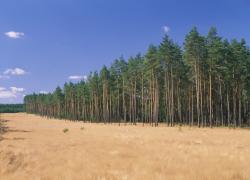 fot. Paweł Fabijański
fot. Paweł Fabijański
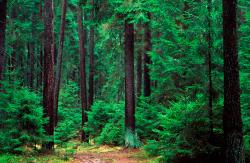 fot. Paweł Fabijański
fot. Paweł Fabijański
 fot. Paweł Fabijański
fot. Paweł Fabijański

